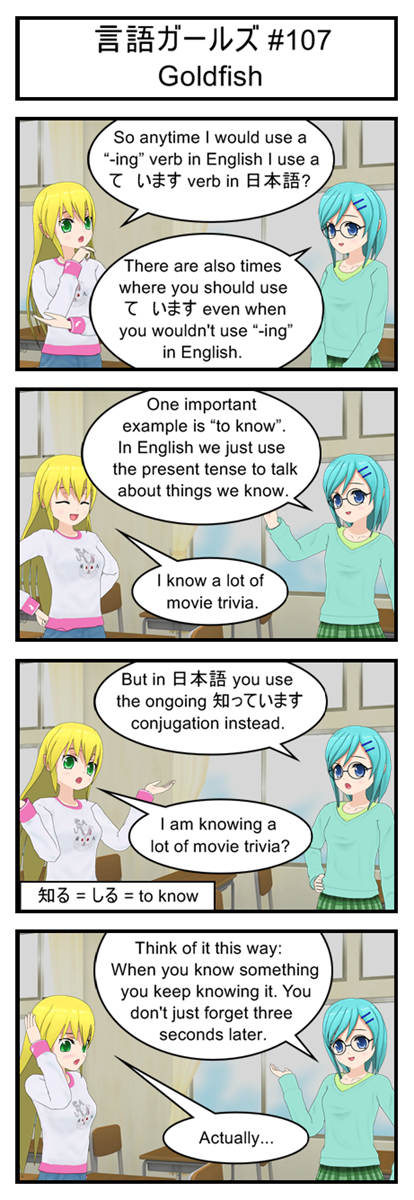
When you think about it the present tense in both English and Japanese has two uses:
1) To talk about something you do in general. “I write a blog.”
2) To talk about instantaneous actions. “I push the button”.
In English “to know” is used as a general present tense. “Yeah, I know the first ten digits of Pi. That’s a generally true statement about me.”
But in Japanese they prefer the ongoing “I am knowing” form instead of the general “I know”. Which is both fine and logical… but sure takes some getting used to. Just remember that “shitteru” and “shitteimasu” both mean “to know” and don’t worry too much about the grammar specifics.
Vocabulary
知る = しる = to know
Transcript
言語ガールズ #107
Goldfish
Yellow: So anytime I would use a “-ing” verb in English I use a て います verb in 日本語?
Blue: There are also times where you should use て います even when you wouldn’t use “-ing” in English.
Blue: One important example is “to know”. In English we just use the present tense to talk about things we know.
Yellow: I know a lot of movie trivia.
Blue: But in 日本語 you use the ongoing 知っています conjugation instead.
Yellow: I am knowing a lot of movie trivia?
Blue: Think of it this way: When you know something you keep knowing it. You don’t just forget three seconds later.
Yellow: Actually…